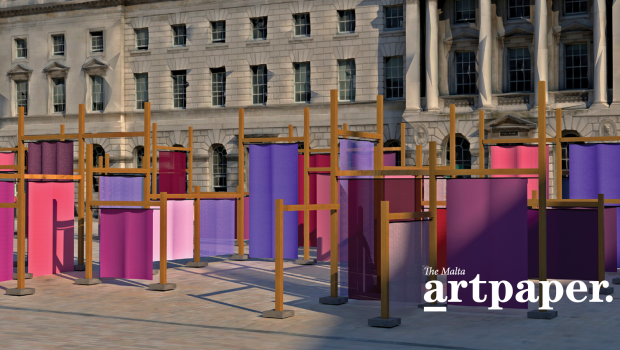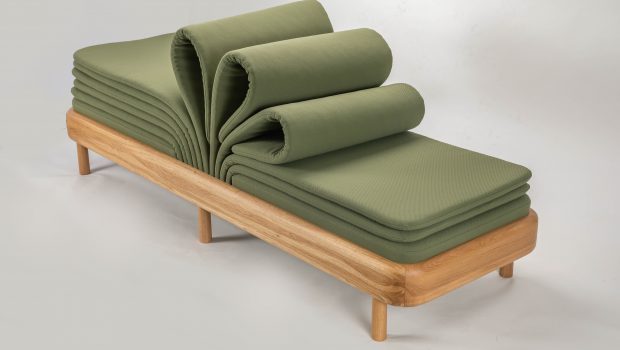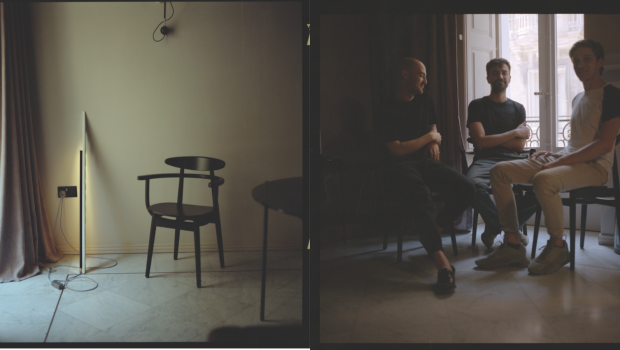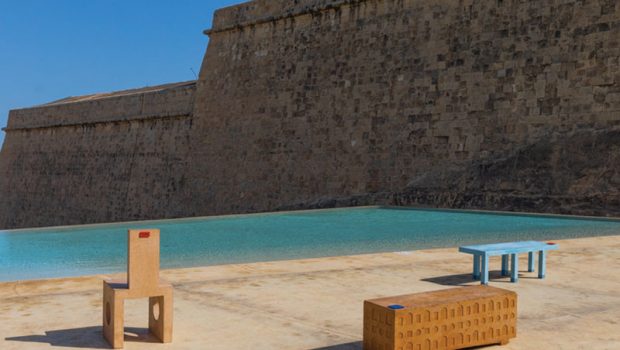Big Magic on a Small Stage
Light Design Solutions | The perfect lighting for art

Lighting is essential, and planning should be an intrinsic step when setting up any space. However, preparation is often overlooked, but when planned well lighting can be more energy and cost efficient as well as effective. Artpaper speaks to Peter Cutajar, Light Consultant and Director and the founder of Light Design Solutions, about just this and the perfect lighting for art.
What are the key questions to ask oneself when at the planning stage of lighting a room?
When planning the lighting for a room, whether its in a home, workplace or gallery, there are several key questions to consider:
What is the primary function of the space? Understanding how the room will be used will help determine the type and intensity of lighting needed. For example, a workspace may require brighter, task oriented lighting, while a living room may benefit from softer, ambient lighting for relaxation.
What mood or atmosphere do I want to create? Lighting plays a significant role in setting the ambience of a room. Consider whether you want the space to feel cosy and intimate, bright, energetic or somewhere In between.
What is the natural light situation? Take into account the amount of natural light the room receives throughout the day and how it changes with the time of day and season. This will help determine the need for artificial lighting and how it should complement or supplement natural light.
What are the specific lighting requirements for tasks or activities in the room? Identify any specific tasks or activities that will take place in the room, such as reading, cooking, or artwork display. Different tasks may require different types of lighting, such as task lighting, accent lighting or ambient lighting.
How can I create a balanced lighting scheme? Aim for a combination of ambient, task, and accent lighting to provide overall illumination, task specific lighting, and highlights for decorative elements or focal points in the room. Balancing these different types of lighting will enhance visual comfort and functionality.
What are the aesthetic considerations? Consider how the lighting fixtures themselves contribute to the overall design and style of the room. Choose fixtures that complement the décor and the architectural features while also fulfilling the functional lighting needs.
How can I maximise the energy efficiency? Explore energy-efficient lighting options such as bulbs, dimmer switches, and motion sensors to reduce energy consumption and operating costs while minimising environmental impact.
By addressing these key questions during the planning stage, you can create a well- lit space that enhances both its functionality and aesthetic appeal, whether its in a home, workplace or gallery setting.
How important would you say lighting is when designing any space?
Lighting is incredibly important when designing any space, as it has a significant impact on the overall ambiance functionality and visual appeal of the environment. Here’s why:
Ambience and mood: Lighting sets the mood and ambience of a space. Different lighting levels and colour temperatures can evoke various emotions and feelings. For example, warm, dim lighting can create a cosy and intimate atmosphere, while bright, cool lighting can convey a sense of energy and alertness.
Functionality and task performance: Proper lighting is essential for performing tasks effectively and safely. Task specific lighting, such as desk lamps or under cabinet lighting in kitchens, ensures that people can see clearly and perform tasks with precision.
Visual Comfort: Well planned lighting contributes to visual comfort by reducing glare, shadows and eye strain. Glare from improperly positioned light sources can be uncomfortable and even hazardous, particularly in workplaces or areas where concentration is required.
Highlighting architectural features and artwork: Lighting can be used to accentuate architectural features, artwork or decorative elements within a space, drawing attention to focal points and enhancing the overall aesthetic appeal.
Safety and security: Adequate lighting is crucial for maintaining safety and security in both indoor and outdoor spaces. Properly lit pathways, staircases and entryways reduce the risk of accidents and deter potential intruders.
Energy efficiency: thoughtful lighting design can also contribute to energy efficiency by incorporating energy-saving technologies such as led bulbs, daylight harvesting systems, and motion sensors. Maximising natural light whenever possible can further reduce reliance on artificial lighting sources.

If lighting is not planned beforehand, several problems may arise:
Inadequate illumination: without proper planning, there may be areas of the space that are poorly lit or overly bright, leading to discomfort and difficulty performing tasks.
Inefficient use of energy: without consideration for energy-efficient lighting options and strategies, the space may consume more energy than necessary, resulting in higher utility bills and increased environmental impact.
Mismatched aesthetics: lighting fixtures that do not complement the overall design aesthetic of the space can detract form its visual appeal and coherence.
Safety Hazards: Insufficient lighting in key areas can create safety hazards, such as trip hazards or obstacls that are difficult to see.
Limited Flexibility: without proper planning, there may be limited flexibility to adjust lighting levels or accommodate different activities and occasions with the space.
Overall, effective lighting design is essential for creating comfortable, functional, and visually appealing spaces, and careful planning is crucial to avoid potential problems and maximise the benefits of lighting in any environment.
Why is Erco ideal for lighting art?
Erco only uses highest quality leds to ensure perfect colour rendition and to protect art from UV radiation and they have a very high CRI (colour rendering Index) of 97 which is required to bring out the original colours painted by the artist. The precise optics direct light only where it is needed.
What does Erco offer in terms of technology and design?
With one fitting you can change from a 6 degree beam to variable zoom lenses with round and oval light distribution as well as wall washers and framing optics – Erco offers all light distributions as interchangeable accessories. By inserting a filter on the same light fitting you can also change the colour temperatures from 2700K, 3000K, 3500K and 4000K and CRI will still remain 97. This is the advantage that Erco offers with their range.
How does it contrast in effectiveness and efficiency to a regular spot light fitting and bulb?
Using versatile lighting fixtures that allow for interchangeable filters, lenses and colour temperatures can be highly beneficial, particularly in spaces like galleries where the displays change regularly. Here’s why:
Cost Effectiveness: Investing in a single light fixture that can be adapted to create various scenes and moods through interchangeable components can be more cost effective than purchasing multiple specialised fixtures for different purposes.
Flexibility and Adaptability: interchangeable filters, lenses and colour temperatures provide flexibility to adapt the lighting to different exhibits, artworks or installations without the need for extensive rewiring or fixture replacement. This flexibility allows curator to tailor the lighting to complement the specific requirements and aesthetic of each display.
Efficiency and sustainability: by utilising a single lighting fixture for multiple purposes, there is less waste generated from discarded fixtures and fewer resources consumed in manufacturing and installation. This aligns with sustainability goals and reduces the environmental footprints of the gallery’s operations.
Consistency: Using the same lighting fixture across different exhibits helps maintain consistency in lighting quality and performance throughout the gallery space. This consistency ensures that visitors experience a cohesive and visually pleasing environment as they move from one exhibit to another.
Ease of Maintenance: Standardizing lighting fixtures simplifies maintenance and upkeep processes, as staff only need to familiarise themselves with one type of fixture and stock a single set of replacement parts. This streamlines maintenance tasks and reduces downtime associated with repairs and replacements.
Enhanced creativity: The ability to adjust beam angles, colour temperature and intensity levels provides curators and designers with greater creative freedom to experiment with different lighting effects and create immersive experiences that enhance the narrative and impact of the exhibits.
So, using light fixtures with interchangeable components offers numerous advantages, including cost effectiveness, flexibility, sustainability, consistency, ease of maintenance and enhanced creative possibilities. The approach is particularly beneficial in dynamic environments like galleries, where the ability to adapt lighting to changing displays is essential for creating engaging and memorable visitor experiences.
What is the best light temperature when lighting artwork?
It all depends on the colour used in the artwork. When there is a mixture of colour, it is best to use both 3000K and 4000K.
Can you discuss the latest commission you had and what was achieved?
We have used Erco products in the new lighting project at the oratory in St Johns Cathedral exhibiting the beheading of St Johns by Caravaggio. As everyone knows the artist is using chiaroscuro technique. By leveraging Erco products in the lighting design for Caravaggio’s The Beheading of St. John you can effectively highlight the artist’s chiaroscuro technique and create a captivating viewing experience that stays true to the original intent of the artwork.
For more information or an appointment visit Light Design Solutions at 90A Salvu Psaila Street, Birkirkara or call +356 21496843. www.lds.com.mt








